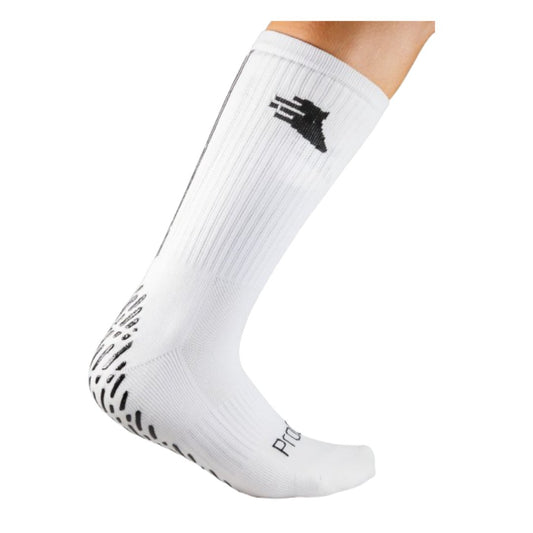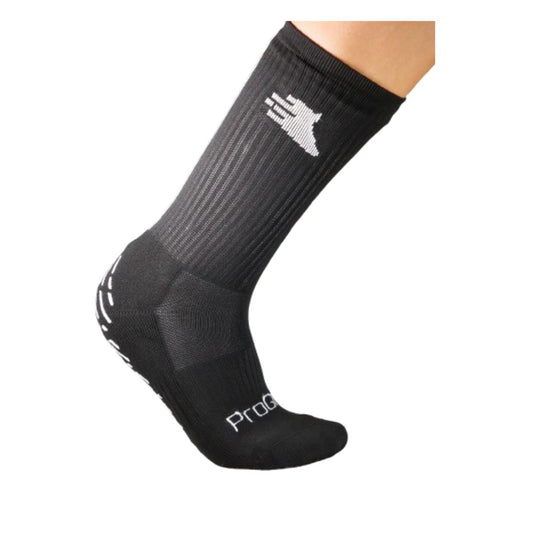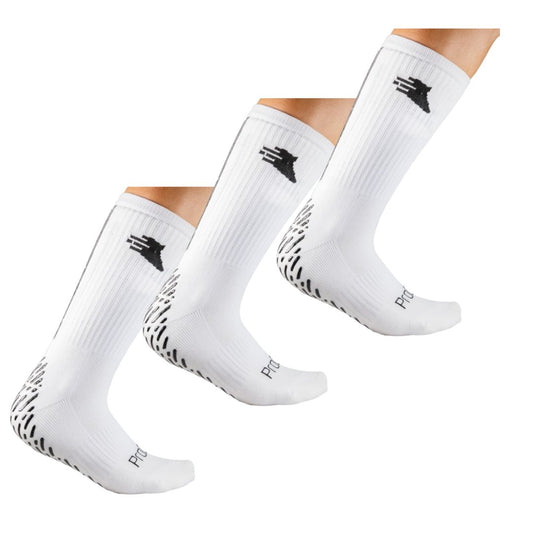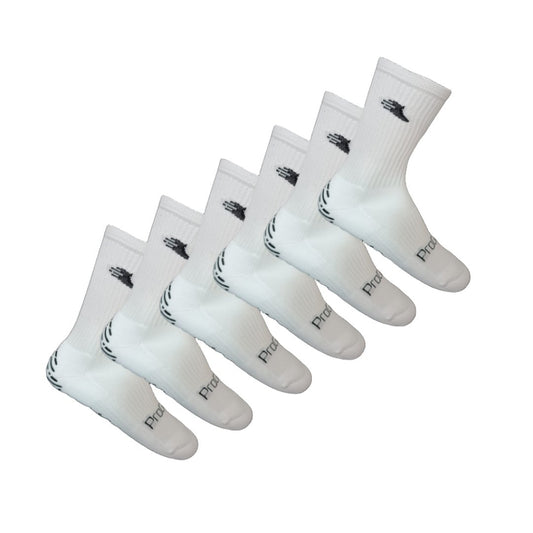Why do footballers wear grip socks? Footballers wear grip socks to improve traction inside their boots, reduce slippage, enhance stability during quick movements, prevent blisters, and provide better overall comfort, leading to improved performance on the field.
Why Do Footballers Wear Grip Socks?
Football, known as "the beautiful game," demands peak physical performance, agility, and precision. As players look to gain any possible advantage, one piece of equipment has become increasingly popular: grip socks. These specialized socks are designed to provide various benefits that can enhance a footballer's performance. But why exactly do footballers wear grip socks?
**Improved Traction Inside the Boots**
One of the primary reasons footballers wear grip socks is to improve traction within their boots. Traditional socks can slip inside the boot, especially during intense play, leading to unstable footing. Grip socks, however, feature non-slip materials on the sole, which create friction between the foot and the boot. This added friction ensures that players' feet remain firmly in place, allowing for more precise movements and better control during rapid changes in direction.
**Enhanced Stability and Balance**
Football requires players to make quick turns, sudden stops, and explosive sprints. These movements demand excellent balance and stability. Grip socks contribute to this by reducing internal slippage, thereby enhancing the player's ability to maintain stability. When a player’s foot stays securely in place, they can perform more confidently and effectively, minimizing the risk of falls or slips that could lead to injury or loss of possession.
**Prevention of Blisters**
Blisters are a common issue for footballers, caused by the repetitive friction between the foot, the sock, and the boot. Grip socks help mitigate this problem by reducing the amount of movement and friction within the boot. The secure fit means there is less rubbing and chafing, which can significantly reduce the likelihood of developing painful blisters. This not only keeps players more comfortable but also allows them to focus entirely on their game without the distraction of foot pain.
**Better Comfort and Fit**
Comfort is paramount for athletes who spend hours training and playing. Grip socks are designed with this in mind, offering a snug, ergonomic fit that conforms to the shape of the foot. This personalized fit means that the socks move seamlessly with the foot, providing consistent support and cushioning. Many grip socks are also made from high-quality, breathable materials that help wick away moisture, keeping feet dry and comfortable even during the most strenuous matches.
**Improved Performance**
All these benefits—enhanced traction, stability, blister prevention, and comfort—culminate in improved performance on the field. When players are not worried about slipping, dealing with blisters, or feeling uncomfortable, they can concentrate fully on their gameplay. This focus allows for better execution of skills, more accurate passes, and quicker reactions, all of which are crucial in a high-paced sport like football.
**A Growing Trend**
The popularity of grip socks among footballers has been growing rapidly. What started as a niche product has now become almost a standard piece of kit for many professional and amateur players. The visible endorsement of these socks by top footballers has also contributed to their widespread acceptance and use.
In the competitive world of football, every detail matters. Grip socks might seem like a small addition, but their impact can be significant. By providing improved traction, stability, and comfort, these socks help players perform at their best, game after game. Whether preventing blisters or ensuring a secure fit inside the boot, grip socks are an essential tool for footballers looking to enhance their performance and gain an edge on the pitch.





